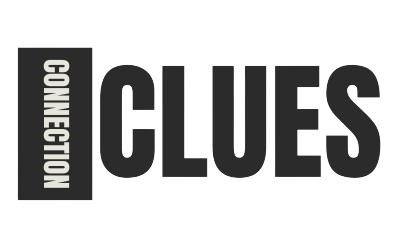In today’s digital-driven world, many businesses rely on email marketing and social media for sales. However, one traditional method still delivers high-impact results—cold canvassing.
Cold canvassing is the process of approaching potential customers or clients without prior contact, either through door-to-door sales, phone calls, or in-person visits. When done right, it can be a highly effective way to generate leads, close deals, and build relationships.
- But how can you cold canvas successfully without being intrusive? In this guide, we’ll explore:
What cold canvassing is and how it works
The best techniques to approach customers
Proven scripts and strategies to increase success rates
How to handle rejection and objections like a pro
Let’s dive in and master the art of cold canvassing!
What is Cold Canvassing?
Cold canvassing is a direct sales approach where sales representatives or business professionals reach out to potential customers without prior contact or an appointment.
Example: A real estate agent knocking on doors in a new neighborhood to introduce their services.
Example: A salesperson visiting small businesses to promote a new marketing tool.
Fun Fact: Some of the most successful companies, including Coca-Cola and Cutco, built their empires through cold canvassing sales techniques.
Cold Canvassing vs. Cold Calling: What’s the Difference?
| Feature | Cold Canvassing | Cold Calling |
| Method | In-person visits | Phone calls |
| Personalization | High (face-to-face interaction) | Medium (limited tone & expression) |
| Success Rate | Higher (physical presence builds trust) | Lower (people ignore unknown calls) |
| Best for | Real estate, door-to-door sales, local business marketing | Telemarketing, B2B sales, follow-ups |
Key Takeaway: While cold calling works for certain industries, cold canvassing builds stronger relationships through face-to-face communication.
How to Cold Canvas Successfully: Step-by-Step Guide
Research Your Target Audience
Before you start knocking on doors or walking into businesses, know who your ideal customer is.
- Identify high-potential locations (neighborhoods, offices, or industries).
Understand their needs (what problems can your product solve?).
Check competitors (are they using cold canvassing successfully?).
Prepare a Strong Elevator Pitch
Your first impression is everything. A well-crafted elevator pitch should be:
- Brief (30–60 seconds).
Compelling (highlight benefits, not just features).
Conversational (engage, don’t overwhelm).
Example Script for a Salesperson:
“Hi! I’m Alex with [Company Name]. We help businesses like yours save up to 30% on energy bills with our smart tech solutions. I’d love to share how we can help you—do you have a moment?”
Pro Tip: End with an open-ended question to keep the conversation going!
Master the Art of Approaching Strangers
- Smile and maintain eye contact – Builds trust instantly.
Dress professionally – First impressions matter.
Be confident but not pushy – Approach with a friendly and helpful attitude.
Have marketing materials – A business card or brochure can reinforce your pitch.
Key Fact: Studies show that face-to-face requests are 34 times more successful than email or phone calls!
Handle Rejections & Objections Gracefully
Not everyone will be interested, but that doesn’t mean it’s a wasted opportunity.
Common Objections & How to Respond
| Objection | Response Strategy |
| “I’m not interested.” | “I completely understand! May I leave you with some information in case your needs change?” |
| “I don’t have time right now.” | “No problem! When would be a better time to connect?” |
| “We already work with someone.” | “That’s great! How is that working for you? Maybe we can offer something even better.” |
Pro Tip: Don’t argue—listen, acknowledge, and pivot the conversation to keep the door open for future engagement.
Follow Up & Stay Persistent
- Send a thank-you email or message – Reconnect with warm leads.
Schedule a follow-up visit or call – Many sales happen after multiple touchpoints.
Use a CRM system – Track potential clients and their responses.
Fact: 80% of sales require at least 5 follow-ups—so don’t give up too soon!
Top Industries That Benefit from Cold Canvassing
Real Estate Agents – Finding potential home sellers and buyers.
B2B Sales – Promoting software, office supplies, or services.
Home Improvement & Solar Companies – Selling remodeling, solar panels, or security systems.
Car Dealerships – Generating leads for new and used car sales.
Educational Services – Promoting tutoring or training programs.
Pro Tip: If you work in any of these industries, cold canvassing can be a game-changer for finding new customers!
Pros & Cons of Cold Canvassing
| Pros | Cons |
| Direct human interaction builds trust | Time-consuming |
| Higher success rate than cold calling | High rejection rate |
| Great for localized lead generation | Can be physically exhausting |
| Can instantly answer questions & objections | Not scalable like digital marketing |
Best Strategy? Combine cold canvassing with online marketing for maximum results!
Conclusion
Cold canvassing remains one of the most effective sales techniques for building relationships, generating leads, and closing deals. While it requires confidence, resilience, and strategic planning, the rewards can be huge for those who master it.
- Key Takeaways:
Prepare a strong elevator pitch.
Approach confidently and professionally.
Handle objections with grace.
Follow up consistently for higher conversion rates.
Ready to start cold canvassing? Grab your pitch, step out, and turn cold leads into hot sales!
FAQs
1. Does cold canvassing still work in 2024?
Yes! While digital marketing is dominant, face-to-face selling remains powerful—especially for high-ticket or local sales.
2. What’s the best time to cold canvas?
- Weekdays: 10 AM – 12 PM & 2 PM – 5 PM (avoiding lunch breaks).
Weekends: Best for residential canvassing.
3. How do I stay motivated when cold canvassing?
- Set daily goals (e.g., 10 successful conversations).
Focus on quality over quantity.
Keep track of small wins (every conversation is progress!).
4. How can I improve my success rate?
- Research your audience before starting.
Refine your pitch based on feedback.
Follow up consistently!
5. Can introverts succeed in cold canvassing?
Absolutely! Introverts can use active listening, empathy, and preparation to excel in one-on-one sales interactions.
Also read: Nihiwatu Resort Sumba: 10 Reasons It’s the Ultimate Luxury Escape









